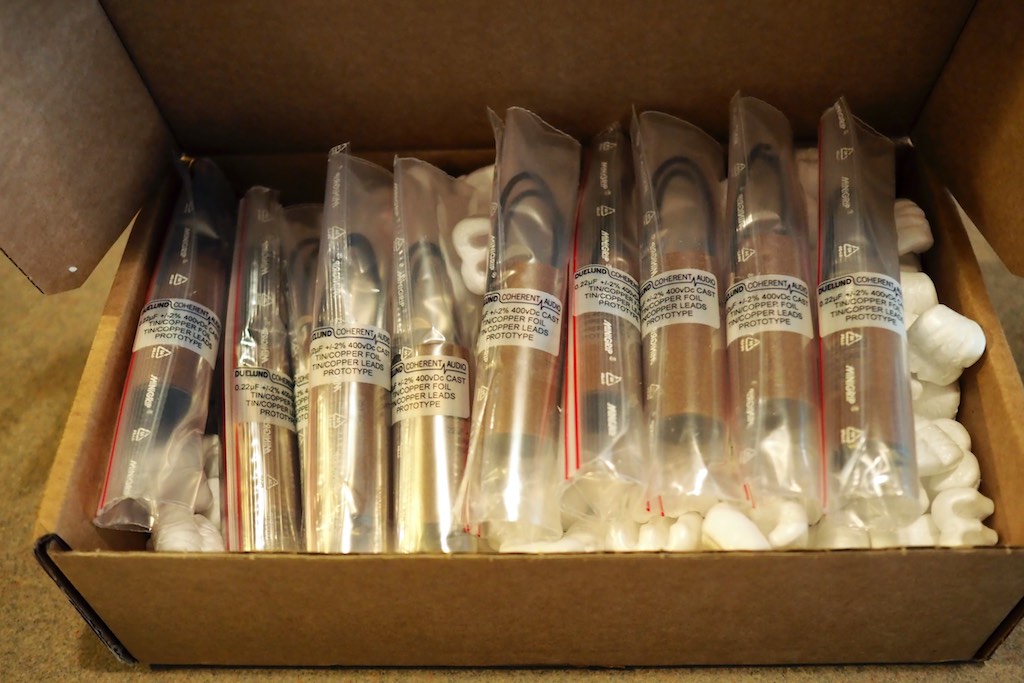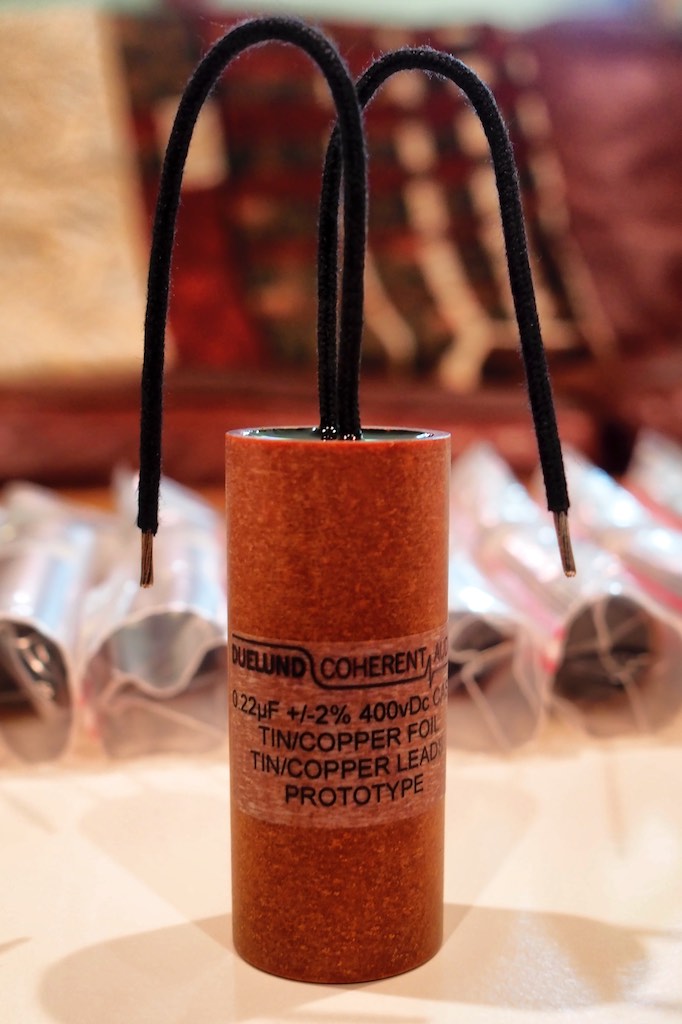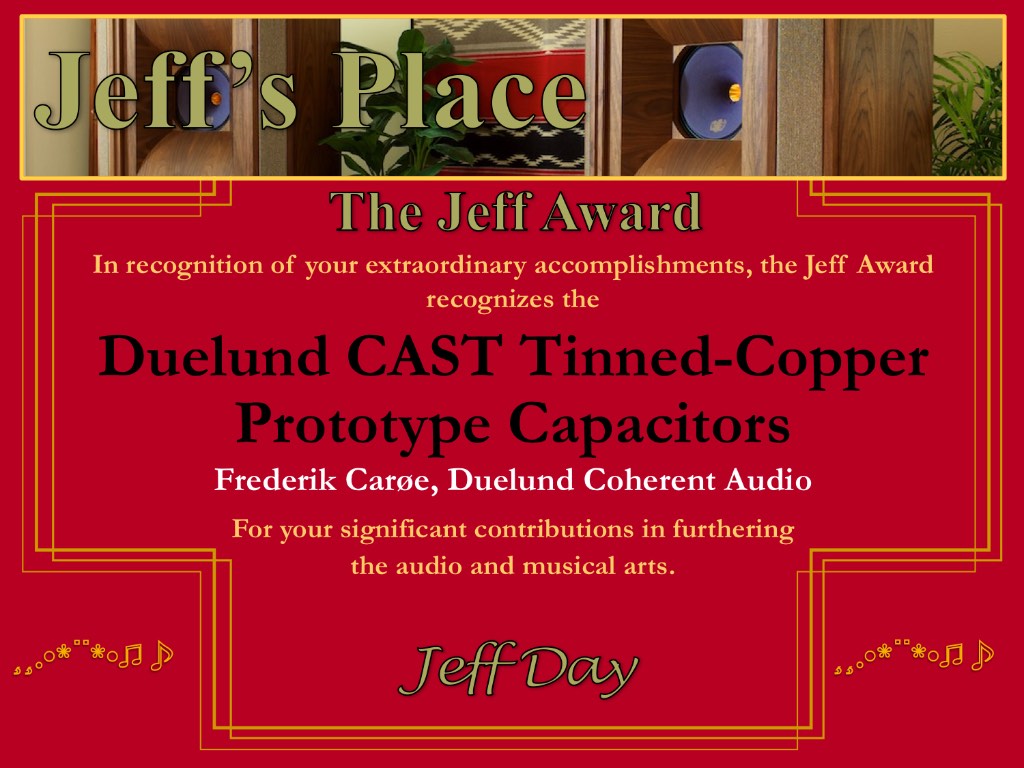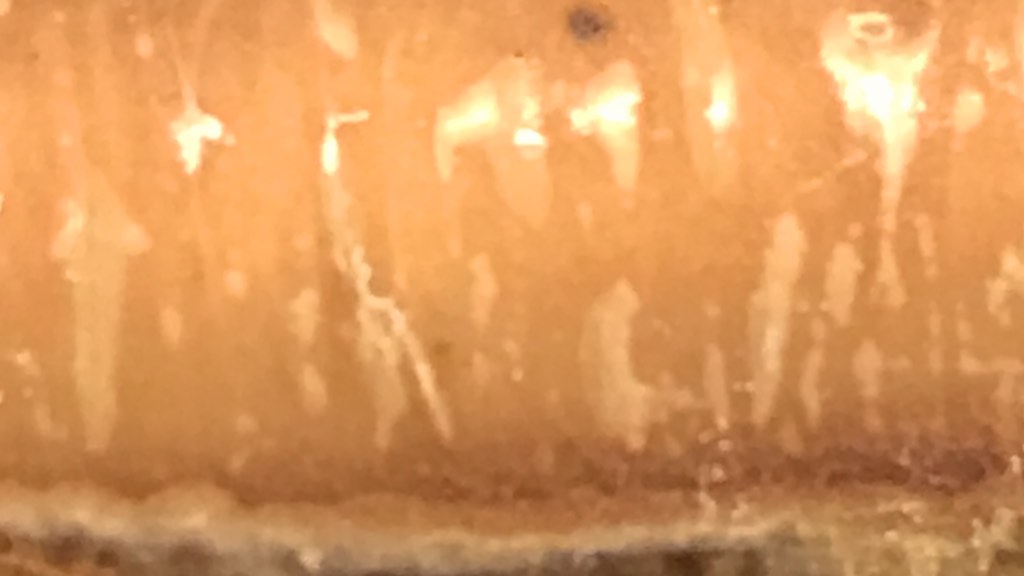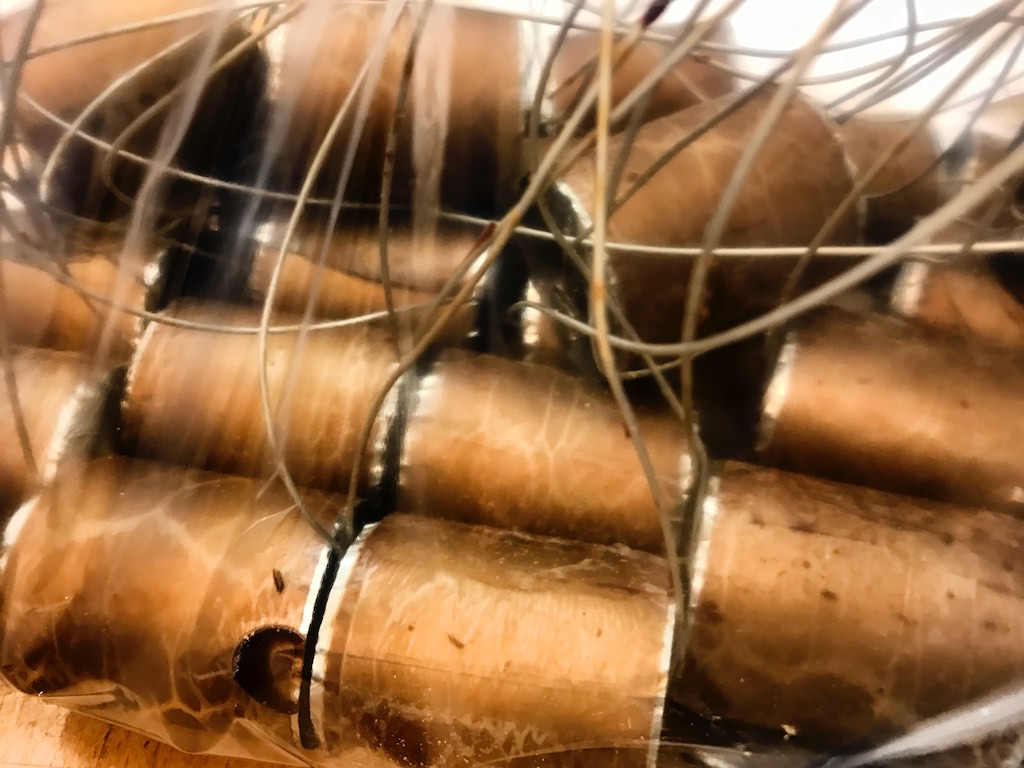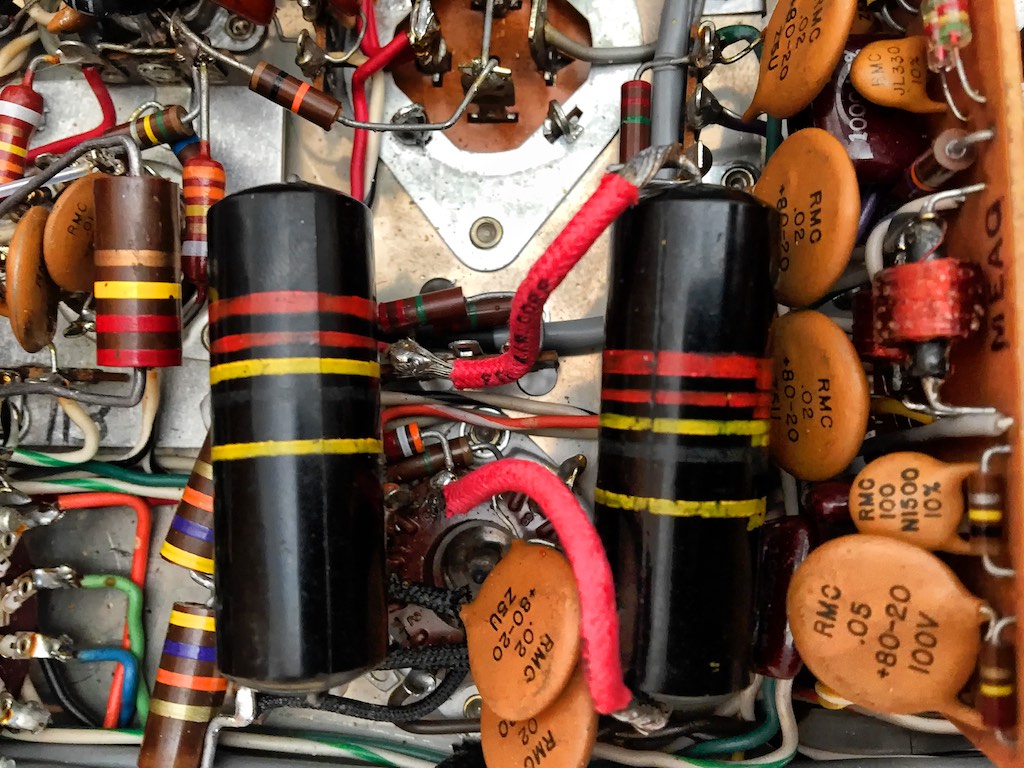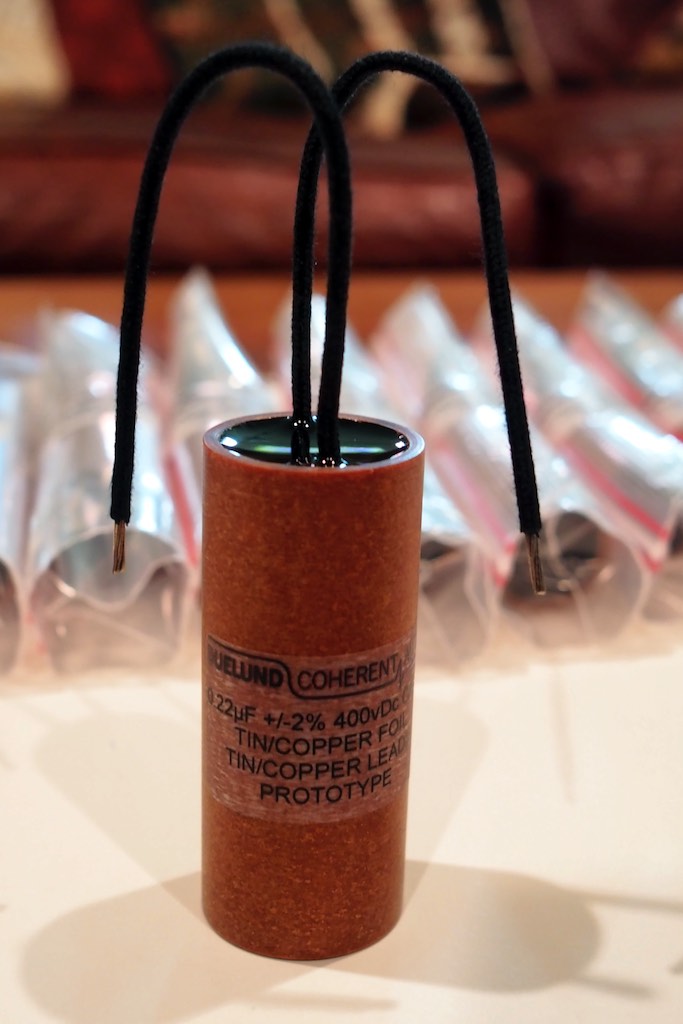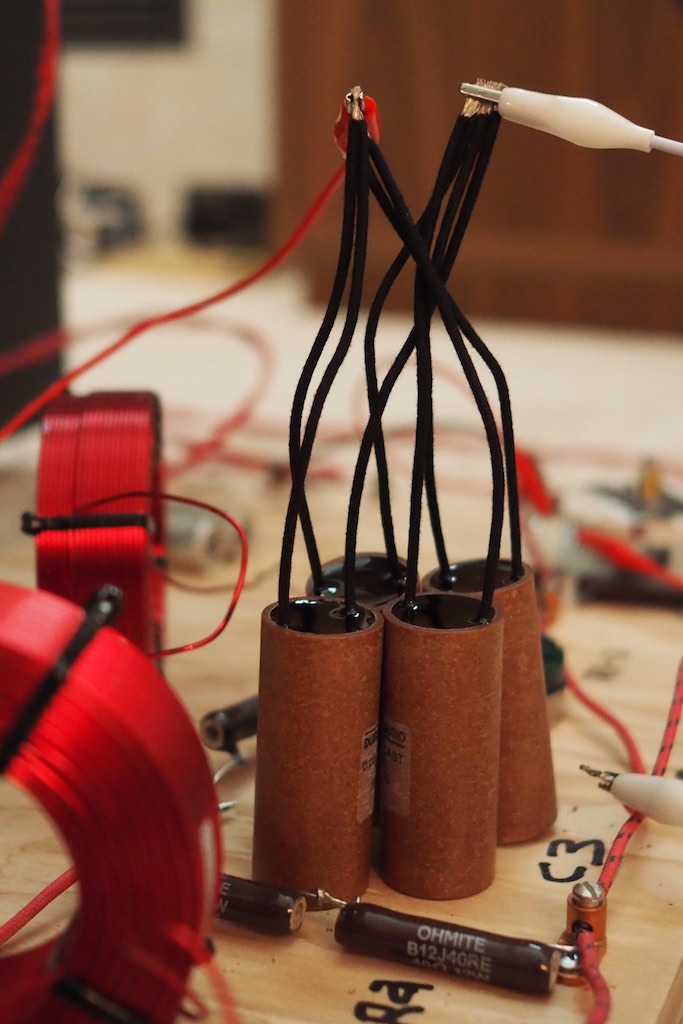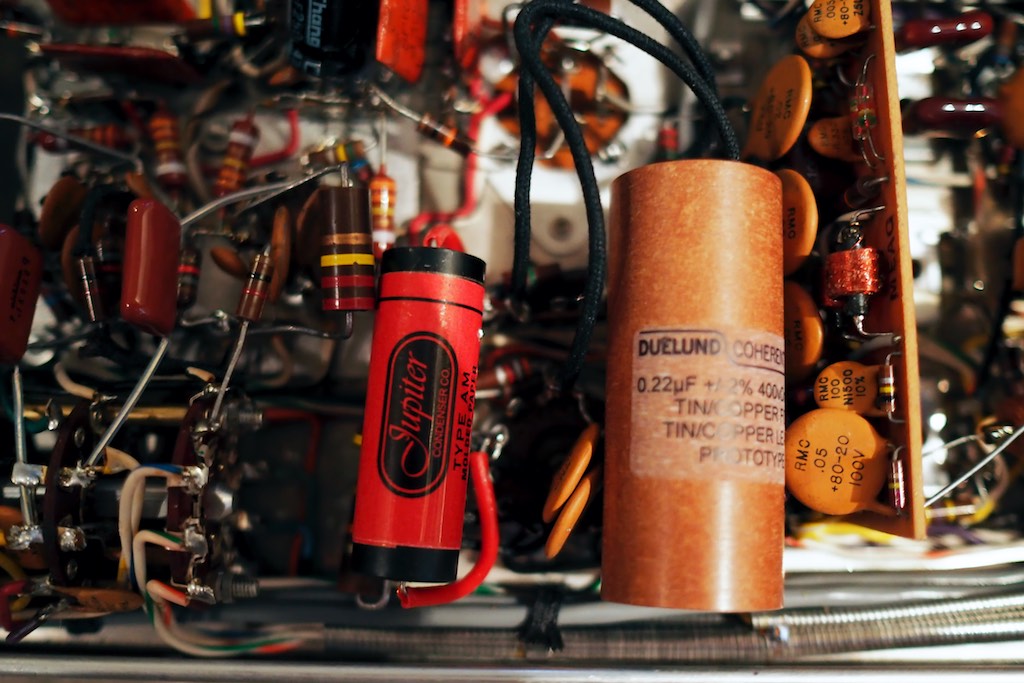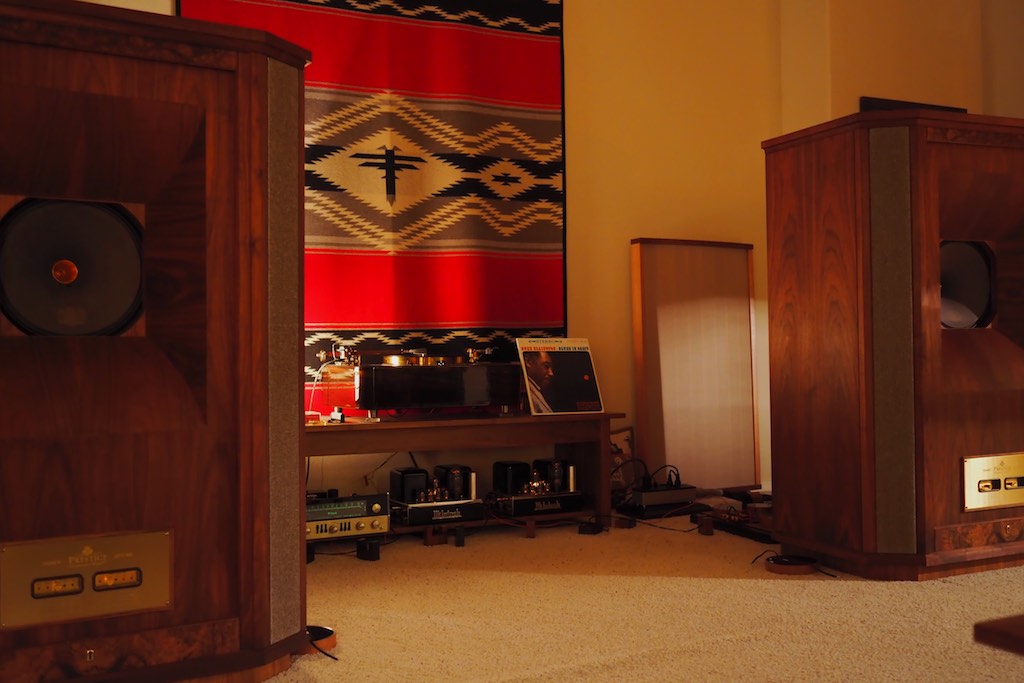Those of you have been reading along know that Frederik Carøe of Duelund Coherent Audio really wowed me (and many of you) with the debut of his impressive Duelund DCA16GA tinned-copper ‘tone wire’ that is an affordable musical marvel.
Then hot on the heels of the DCA16GA, Frederik sent me some 0.22uF/400V Duelund CAST tinned-copper prototype electronics capacitors to try, and wowed me again!
As you know if you have been following the developing story, the 0.22uF/400V Duelund CAST tinned-copper prototype electronics capacitors completely annihilated every other capacitor I've tried in both my vintage McIntosh MX110Z and vintage Altec A5 Voice of the Theatre loudspeakers' crossovers, and by such a large margin you couldn't even see second place in the rearview mirror, but more about the details of that in a moment.
Ok, I guess it's not hard to tell how impressed I am with the the 0.22uF/400V Duelund CAST tinned-copper prototype electronics capacitors, so it should come as no surprise that I'm giving Frederik a Jeff Award for 2016 to recognize the advancement in audio electronics capacitors that I believe the Duelund CAST tinned-copper capacitors represent.
Please join me in congratulating Frederik on his award!
Frederik, what you have done with the Duelund CAST tinned-copper capacitors is absolutely amazing, and if these prototypes are any indication of what's to come, I think that you may have completely re-written the book on what is possible musically & sonically from capacitor performance in audio electronics, and I find that extremely exciting!
As I reported earlier, "The one thing that is absolutely clear, is that the magnitude of improvement between the 0.22uF Duelund CAST Sn-Cu capacitors and any of the other capacitors I have tried in my McIntosh MX110Z is considerable, and it comes with that same sort of tinned-copper goodness that the Duelund DCA16GA premium tinned-copper cable brings to the music: extremely vivid tone color, superb dynamic response, melodic sophistication, harmonic complexity, live-like timbral complexity, spooky imaging presence, natural live-like level of resolution, generous portrayal of soundstage & soundspace, a presentation so breathtakingly musical, and with such high level of intensity of emotional engagement that I’m positively giddy about it."
The inside scoop of what goes into the Duelund CAST hand-crafting process:
Now let me start at the beginning of this story, and take a moment to describe for you how the prototype Duelund CAST tinned-copper 400V electronics capacitors were made.
It's an interesting - and incredibly labor intensive - process to make Duelund CAST capacitors, and every single one of them is individually hand-crafted.
(You can read about the similar process of how the pure silver or copper Duelund CAST 100V loudspeaker crossover capacitors that I used in my Westminster Royal SE's crossovers are made here.)

A photo of the tinned-copper foil that was used in the prototype Duelund CAST tinned-copper capacitors.
First a foil of tinned-copper is wound with a Mylar and paper dielectric to a value that is over the eventual rated value, then the foil is put under vacuum pressure in a wax tank at high temperature for about a week, so that everything inside the winding undergoes vacuum impregnation and is permeated by wax.
When that process is done, the resulting foil is wound by hand in a humidity and temperature-controlled room to an exact specification (0.22uF in the prototypes), and then placed back into the wax.
Immediately after this process the winding is sealed by the use of a special lacquer, which is also used in the yacht industry to seal against moisture. This takes another week.
The Duelund DCA16GA tinned-copper wire leads are attached to the winding at this point, then the winding is heated and placed in a ring of vacuum impregnated paper that has been readied with a base of Duelund's CAST material.
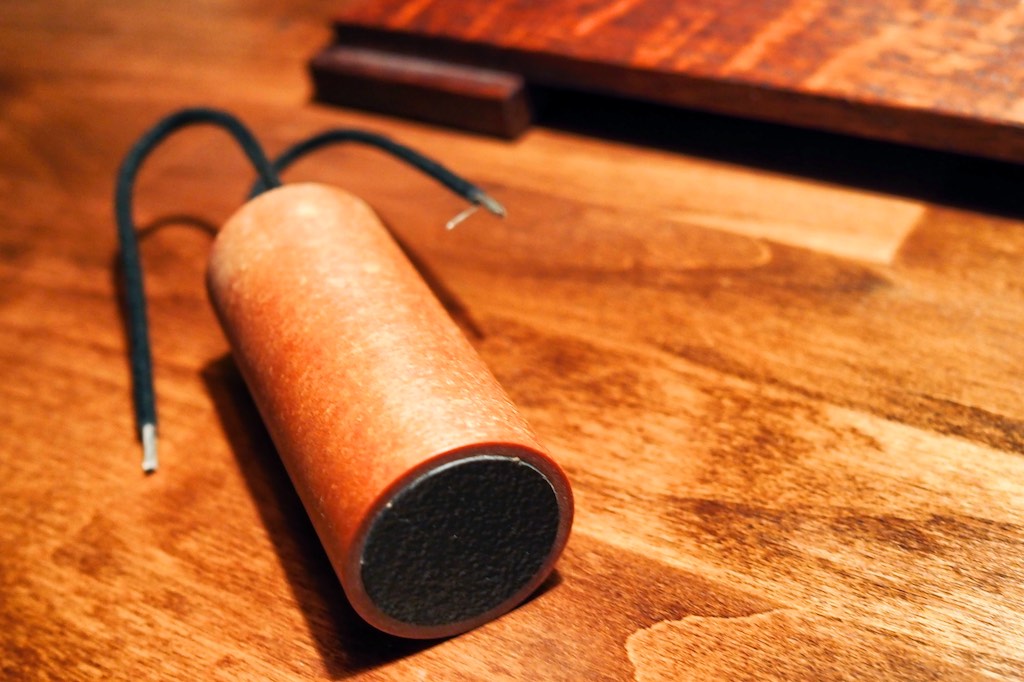
Here's the bottom of a 0.22uF Duelund CAST tinned-copper capacitor, showing the ring of vacuum impregnated paper, and the base of Duelund's CAST material.
The CAST material is then poured on top of it in five stages, with air bubbles in the CAST material being forced out by applying a very precisely controlled flame to the surface. This process takes another week.
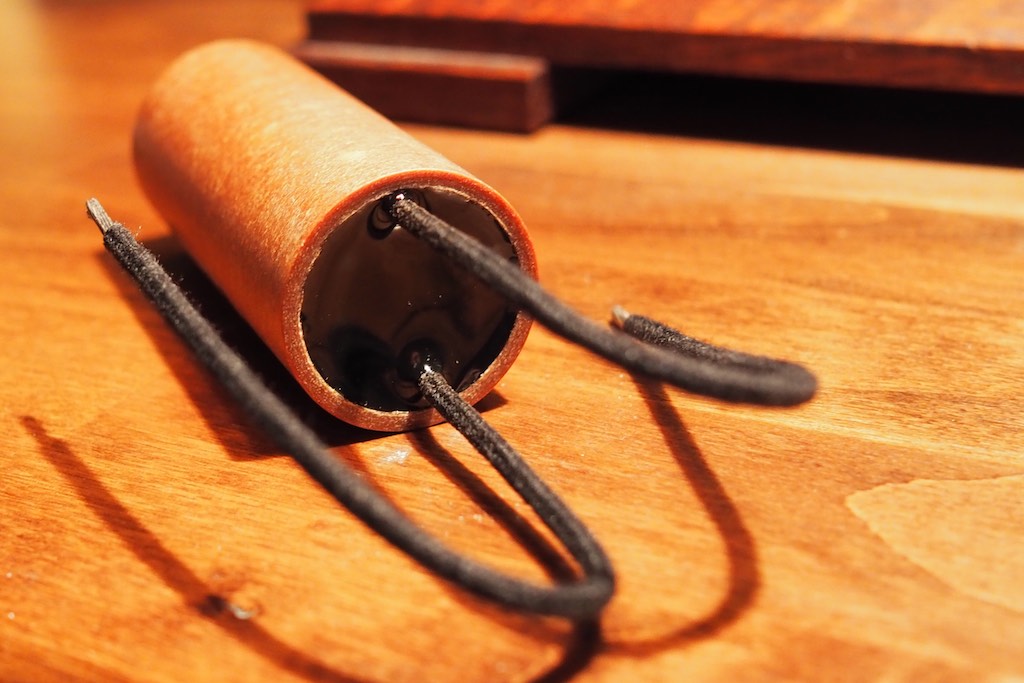
Top of the Duelund CAST tinned-copper capacitor, you can see the CAST material that is poured in on top of the winding.
The total production time is typically six to eight weeks for a Duelund CAST capacitor.
So if you've been wondering why Duelund CAST capacitors are spendy compared to run-of-the-mill high-quality mass production capacitors, now you know why, there is an incredible amount of labor-hours involved in their production.
You've heard me say more than once that I think that Duelund CAST capacitors are the finest available on Planet Earth today, and you definitely get superior musicality & sonics for the extra you pay for them over typical high-quality audio capacitors.
Here's a couple of other thoughts you might find interesting (I find them interesting!):
Tinned-copper: To the best of my knowledge, no one has ever made a capacitor with tinned-copper foil, like Frederik has with the Duelund CAST tinned-copper capacitors.
After hearing what tinned-copper 'tone wire' is capable of musically & sonically in the conductors for speaker wiring, speaker cables, and interconnects, I am convinced that there are some very special and important musical & sonic attributes that tinned-copper brings to the audio game that no other conductor does, expanding the palette of voicing options available to audio designers and DIY enthusiasts.
After hearing the tinned-copper foil conductor sound so incredible both musically & sonically in these Duelund CAST Sn-Cu prototype capacitors, I am more convinced than ever of that.
I can't wait until the 'vintage tone' guitar guys get to hear these Duelund CAST Sn-Cu capacitors, and I predict they'll be 'over the moon' with their performance, just as I am.
Mylar/paper: The 0.22uF/400V CAST caps are primarily intended for use in audio electronics like amplifiers & preamplifiers that need higher voltage rating capacitors (400V or 630V).
Frederik uses a dual dielectric of Mylar and paper in order to achieve the higher voltage rating for audio electronics use, but when Frederik makes 100V CAST capacitors for use in crossovers, a paper-only dielectric is used, as the voltage requirements aren't as high (as is done with with the pure silver & copper 100V CAST caps that I described for the Duelund-WRSE project in the aforementioned link).
Now for a little 'vintage-tone' intrigue: Mylar is the trademarked name that Dupont uses for its polyester film. Frederik uses a dual dielectric composed of Mylar and paper in the prototype 0.22uF/400V Duelund CAST tinned-copper capacitors, which you vintage fans might recognize from vintage Sprague literature, as that's what was used in the post-1960 vintage 'Black Beauty' capacitors.
In pre-1960 'Black Beauty' Bumblebee capacitors, as in the photo below, a paper-only dielectric was used, just as Frederik does in the 100V Duelund CAST capacitors for use in loudspeaker crossovers.
The earlier pre-1960 Sprague 'Black Beauty' capacitors were referred to as Bumblebees due to the colorful stripes on them that indicated their capacitance (above). Later post-1960 Sprague 'Black Beauty' caps had the capacitance, voltage, and tolerance, printed on them in English to make it quicker & easier to determine their values, and were commonly referred to as just Black Beauties.
I love vintage Sprague Bumblebees, but not as much as I love the prototype Duelund CAST tinned-copper capacitors. You could consider these Duelund CAST Sn-Cu capacitors to be a modern day 'Super Black Beauty', which I think is very cool.
Natural materials: Steen Duelund's philosophy was to use natural materials whenever possible in components, because natural materials help imbue an even more natural and desirable tone to components, whether they be capacitors, resistors, or inductors, and all modern Duelund products use natural materials wherever possible.
100V Duelund CAST loudspeaker capacitors use a natural paper dielectric, and 400V & 630V Duelund CAST electronics capacitors use a dual dielectric of natural paper, along with Mylar to extend the voltage rating.
The prototype 0.22uF/400V Duelund CAST electronics capacitors use wax to permeate the windings, and the 100V & 630V Duelund CAST capacitors use a combination of wax & oil to permeate the windings.
The Duelund CAST capacitors also use an exterior casing that is a vacuum impregnated natural paper ring, and natural insulators for their leads (baked oiled-cotton or silk).
So what doe we have here in the 0.22uF/400V Duelund CAST tinned-copper capacitors?
We have a very laboriously hand-crafted capacitor using a unique tinned-copper conductor, a post-1960 'Black Beauty' style of dual dielectric using Mylar & paper, with the winding permeated with wax under vacuum, which is then potted in a vacuum impregnated natural paper ring exterior casing with CAST material for vibration damping and durability, and it has Duelund DCA16GA tinned-copper wire leads to finish it off.
If the Duelund CAST tinned-copper electronics capacitors were just modern day incarnations of Black Beauties I'd be thrilled, but they are way, way, more than that, and in a very exciting and musical way.
The 0.22uF/400V prototype Duelund CAST tinned-copper capacitors in my vintage Altec A5 Voice of the Theatre loudspeaker crossovers:
When I tried a quad 0.88uF bundle of the prototype 0.22uF Duelund CAST tinned-copper electronics capacitors in the 0.83uF C3 positions of the crossovers of my vintage Altec A5 Voice of the Theatre loudspeakers, I did it on a bit of a lark, as they're really intended for use in preamplifiers & amplifiers, but they sounded fantastic!
In reality, if you wanted crossover capacitors for your A5's C3 crossover positions, you'd order a pair of 0.83uF/100V Duelund CAST capacitors which are optimized for use in crossovers, but I had the 0.22uF/400V Duelund CAST tinned-capacitors in-hand, so I improvised.
Optimized for use in crossovers?
If the 0.22uF/400V Duelund CAST Sn-Cu electronics capacitors are more like a 'Super Black Beauty' with their Mylar & paper dual dielectric, the 100V Duelund CAST Sn-Cu capacitors are more like 'Super Bumblebees' with their all natural paper-only dielectric, which is optimized for the lower voltage requirements of crossovers.
The 100V Duelund CAST tinned-copper capacitors also use a paper-in-oil (PIO) approach like those old vintage Bumblebees, but with an improvement, as both oil & wax are used to permeate the winding instead of just oil, for improved performance.
Given how ridiculously good the quad bundle of 0.22uF/400V Duelund CAST tinned-copper capacitors sounded like in the C3 positions of my Altec A5 Voice of the Theatre loudspeakers, I can only imagine what a pair of custom 0.83uF/100V Duelund CAST tinned-copper capacitors optimized for crossovers's C3 positions would perform like (drooling)!
The 0.22uF/400V Duelund CAST tinned-copper capacitors in my vintage McIntosh MX110Z tuner-preamplifier (below):
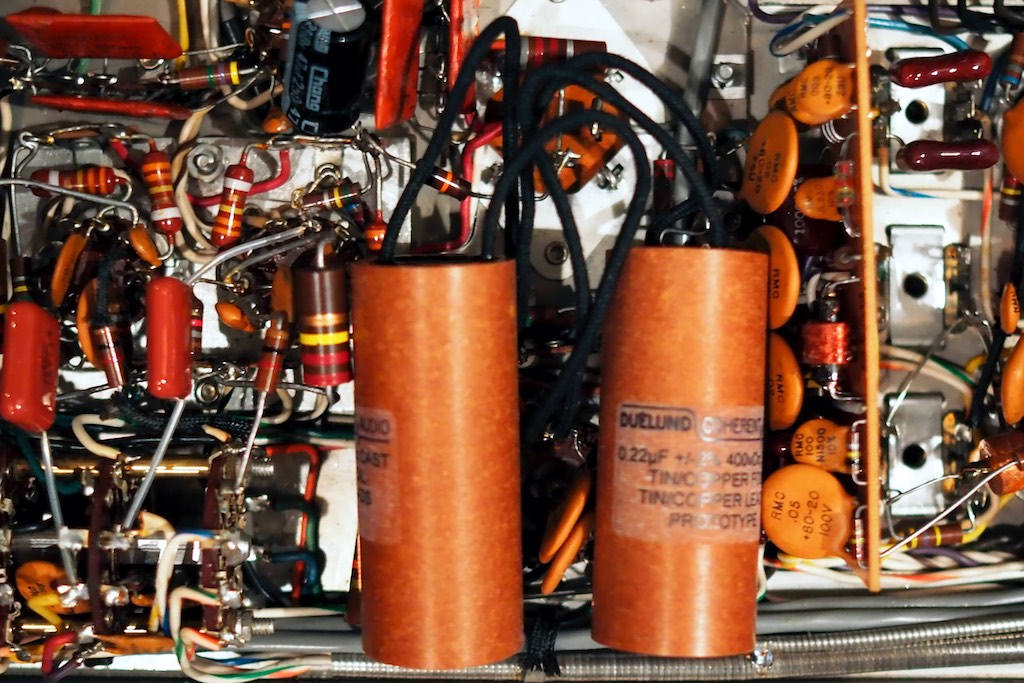
A pair of prototype 0.22uF Duelund CAST Sn-Cu capacitors that I've soldered into my vintage MX110Z McIntosh tuner-preamplifier.
As I've mentioned earlier, the 0.22uF/400V Duelund CAST tinned-copper capacitors are revelation in musicality & sonics in the first stage cathode follower of the high level input in my vintage McIntosh MX110Z tuner-preamplifier, and they significantly outperformed every capacitor I've tried in my vintage McIntosh MX110Z tuner-preamplifier to date, even the lovely vintage Bumblebees, and by no small amount. It was a slap down!
As a refresher, in Modification B I made changes to the first stage cathode follower of the high level input, by replacing two key pairs of 0.1uF capacitors at C93 & C95 and C94 & C96 with various pairs of 0.22 uF capacitors (see schematic above).
I've tried a variety of pairs of 0.22uF capacitors in Modification B, and nothing has even come close to the combination musicality & sonics that the prototype 0.22uF/400V Duelund CAST tinned-copper capacitors possess.
For my 'vintage tone' tastes, I think the 0.22uF/400V Duelund CAST Sn-Cu prototype capacitors are in a completely new league musically & sonically, and none of the other very fine capacitors I have tried even come close to the Duelund's level of performance in my MX110Z.
If I had the correct values in the Duelund CAST Sn-Cu capacitors, and assuming they would fit in the available space (they're big, as you can see in the photo above, and it's tight quarters in the MX110Z), I'd be tempted to retry Yazaki-san's suggested power supply mods for the MX110Z, as I have a hunch their overall tonal balance would make them a nice choice for that application, but that's a story for another day.
Ok, it's time for me to wrap this up and sum things up.
For my tastes, I think the 0.22uF/400V prototype Duelund CAST tinned-copper capacitors represent a musical & sonic breakthrough in capacitors for use in audio electronics.
I like to refer to this blend of musical & sonic performance as 'vintage tone', which is a term I borrowed from the guitar guys that they use to describe how vintage capacitors & tinned-copper wire had greatly superior musical tone to their modern conventional counterparts.
However, in the case of the 0.22uF/400V prototype Duelund CAST tinned-copper capacitors, saying 'vintage tone' is a little misleading, because the Duelund's tonal qualities are vastly superior to even the highly regarded vintage Bumblebees, or any other modern production capacitor I have experienced.
This is not a slam against any other capacitors, it's simply a recognition of the magnitude of the musical & sonic achievement Frederik has accomplished with new Duelund CAST tinned-copper capacitors. While the Duelund CAST Sn-Cu capacitors are likely to be significantly more expensive than any of the aforementioned capacitors, I see it as money very well spent, if like me, ultimate musical performance is what you are after.
Please join me again in congratulating Frederik for his remarkable achievement with the Duelund CAST tinned-copper capacitors, and his significant contribution for furthering the audio & musical arts in making them available.
Frederik tells me that the first shipments of various values will arrive at Parts ConneXion just before Christmas, and more arriving in the January timeframe.
If that doesn't make your Christmas merry I don't know what will!
Hint: Remember how the first batch of Duelund DCA16GA sold out in only 6 days after its arrival? Be sure to get your requests into Chris at Parts ConneXion ASAP if you want any chance of getting some of the new Duelund CAST tinned-copper capacitors before they sell out.
Ok, it's time for me to get back to some music listening.
As always, thanks for stopping by, and may the tone be with you!




